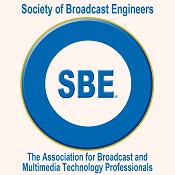
|

CHAPTER 24, Inc., MADISON, WI
|
Our Next Meeting:
Thursday, May 28th
Due to COVID-19 this will be a "Virtual Meeting"
See Details Below
NDI IP Video Production
Network Device Interface technology (NDI) is a royalty free standard enabling IP video workflows across Ethernet networks and represents the most prolific IP-based workflow in the industry. Video, Audio, and Data sources can now be incorporated into the production workflow from across the building, the city, the country and the world. Whether the source is native NDI, or converted from SDI, virtually every device that originates any combination of Video-Audio-Data can be utilized in this "cloud" workflow in near real time.
Bryan Nelson from Alpha Video will show us how this works and examine the vast possibilities.
7:00 PM - Meeting/Program
This meeting will be held virtually via
the Zoom video conferencing platform.
Details, including a link, will be distributed
in the days prior to the meeting.
Election Results
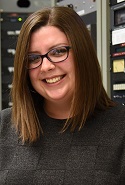 |
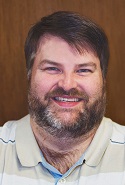 |
| Britny Williams |
Matt Mommaerts |
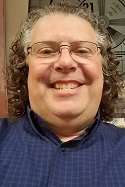 |
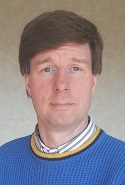 |
| Russ Awe |
Mike Norton |
The results of the 2020 Chapter 24 Officer Elections are in. Britny Williams is elected to her second term as Chapter Chair. Matt Mommaerts is elected to his first term as Chapter Vice Chair. Russ Awe is elected to his second term as Chapter Secretary. Mike Norton is elected to his first term as Chapter Treasurer.
Congratulations to all candidates and thank you for sharing your time and talent to keep our Chapter strong into the future. Thanks also to Roy Henn who completes his third year serving as Chatper Treasurer.
Last Meeting's Minutes
The April 22nd meeting of Chapter 24 was canceled due to the coronavirus pandemic. There are no minutes to report.
Madison's TV Repack Finally Completed
WMSN TV and WISC TV report that their final transmission line hardware installation was completed and swept by the manufacturer on Tuesday April 21st. They were the final two stations operating on auxilliary antennas on the tower while awaiting the completion of their main antenna transmission line systems. After that sweep WMSN was cleared and went to full power on the main antenna the afternoon of Wednesday April 22nd.
Meanwhile the sweep revealed that WISC experienced higher than factory spec'd VSWR and had to remain on their auxilliary system pending further trouble shooting of the main. It was discovered that a line section had been badly dented and bent when the stack was lifted onto the tower. A new line section was shipped in and installed on April 28th and WISC TV has been operating on their main antenna since early the morning of April 29th.
WHA TV and WIFS TV have been operating from their main antennas from the top of the candelabra since last Fall. WKOW (also on the candelabra) and WMTV (on its own separate tower) were not required to change frequencies in the FCC mandated spectrum realignment.
Weeden Retires
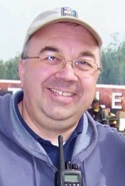
Tom Weeden
Tom Weeden has retired after 34 years at WMTV TV (NBC15) in Madison. For many of those years Tom served the station as its Chief Engineer guiding the NBC affiliate through the many technological changes the television industry experienced. One of his last achievements was to play an instrumental role in the design, build, and occupation of a new studio building highly visible from the West Beltline Highway through its vast glass facing. Tom actively supported SBE Chapter 24, hosting many meetings and writing the Amateur Radio column in its newsletter since 1989. His last day at the station was March 31st. Congratulations Tom Weeden, enjoy your retirement.
Ruppert Retires
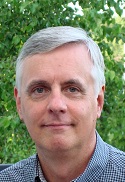
Kevin Ruppert
After almost 41 years at WISC-TV, Kevin Ruppert took his final set of transmitter readings on May 1st. Kevin plans on remaining active in SBE Chapter 24 as well as the Broadcasters Clinic program committee. He said "I have always enjoyed being a part of our industry and working with all of you. Please, keep in touch." Right back at you Kevin. Congratulations Kevin Ruppert, enjoy your retirement.
Broadcasters Clinic Opens
Call for 2020 Speakers
from Linda Baun
The show must go on….
Plans are underway for the October Broadcasters Clinic. Do you have unique perspectives or ideas on trends and technologies as we move forward to the future of radio, television, and online media technologies?
If you have an idea, send an email to Linda Baun (lbaun@wi-broadcasters.org) detailing your proposed topic, a brief synopsis and the name of the presenter.
Dates for the Clinic are October 13-15 at the renovated Madison Marriott West.
Together, we will make it through these times and I look forward to getting us all together again in October.
Program Ideas Needed
The Chapter 24 2020 meeting schedule is available here. Is there a topic you would like to see covered at one of our local Chapter 24 meetings? Or, better yet, is there a topic that you'd like to speak on at an upcoming meeting? Please forward any ideas to Britny Williams or to one of the Chapter 24 officers for consideration. There are several open dates available.
Amateur Radio News
Compiled by Tom Weeden, WJ9H
Facing a growing demand for amateur radio exam sessions in a time of social distancing and stay-at-home orders, sponsors of some Volunteer Examiner (VE) teams have risen to the challenge and are developing systems to remotely proctor test sessions.
"Many of our VEs and VE Teams have been working on remotely proctored exam session ideas, employing both video and in-person components -- following social distancing protocols," ARRL Volunteer Examiner Coordinator (VEC) Manager Maria Somma, AB1FM, said. "We have been receiving interesting and innovative suggestions, and we appreciate the dedication and ingenuity our examiners have shown."
The Spalding County Amateur Radio Club in Georgia is among those that have come up with plans to remotely administer amateur exams while complying with ARRL VEC testing standards during COVID-19 stay-home mandates and social distancing guidelines. Current systems leverage Zoom video-teleconferencing technology, the "Fill & Sign" feature of Adobe PDFs, reliable email, appropriate computer equipment and internet connection, and no volunteer examiners (VEs) present at individual remote test sites. The Georgia club collaborated and shared ideas with the Emergency Amateur Radio Club (EARC) in Hawaii, which has successfully conducted sessions since 2011 with its own remote testing system, initially with paper exams with a proctor on site and now with fillable PDFs, with no on-site proctor.
New England Amateur Radio Inc (NE1AR), an affiliate of New England Sci-Tech, (NESciTech), has taken it one step further, Somma said. It got the approval of ARRL VEC to begin trials of what it describes as "completely online testing with strict rules and protocols for maintaining the integrity of the testing environment." NE1AR is limiting candidates to one exam per session, due to the current candidate backlog and the "difficulty of administering exams online." Candidates must agree to a list of protocols, which include a cell-phone camera scan of the entire room and exam area "to show that there are no materials or people [in the room] that could aid in taking the exam."
"We began a series of trials on April 1 under ARRL VEC review and have now been asked to help train more VE teams on the process," NE1AR President Bob Phinney, K5TEC, told ARRL. "We have now tested 12 applicants and are still working on streamlining the process. We are working with the software developer of the exam delivery system to help them adapt the system for video-supervised testing."
A growing number of countries have authorized selected radio amateurs or organizations to identify their stations with suffixes that propagate the advice to stay at home during the COVID-19 pandemic. A60STAYHOME/# call signs are on the air from the United Arab Emirates, 9K9STAYHOME from Kuwait, TC1STAYHOME in Turkey, and the Saudi Amateur Radio Society's HZ1STAYHOME are among these stations spreading the word from that part of the world.
In Canada, Michael Shamash, VE2MXU, is using VC2STAYHOM. Canada limits call sign suffixes to seven characters. 8A1HOME is in Indonesia (that country limits suffixes to four characters). Australia has permitted the Radio Amateur Society of Australia (RASA) to use the special call sign VI2020STAYHOME, which, at 14 characters, may set a record for world's longest call sign.
An Amateur Radio Network special event station in Finland is on the air with OH5STAYHOME. A station on from Sao Miguel, one of the nine islands in the Azores is using CR2STAYHOME, and 5B4STAYHOME is on from Cyprus.
FCC Part 97 Amateur Radio Service rules do not provide for amateur call sign suffixes longer than three characters, but for US hams wanting to get in on the messaging, §97.119(c) allows a self-assigned indicator after the call sign: "Each indicator must be separated from the call sign by the slant mark (/) or by any suitable word that denotes the slant mark."
(Excerpts from the American Radio Relay League's arrl.org web site)
FCC NEWS
compiled by Tom Smith
WI-FI on the 6 GHZ Band
At the April 23rd meeting of the FCC, a Report and Order (FCC-20-51A1) was adopted authorizing WI-FI on the 6 GHz band. Currently the 6 GHZ band is allocated for TV broadcast point to point transmission such as studio to transmitter links, TV remote pick-up, telephone backhaul between cell towers and satellite uplinks including uplinks to the C-Band downlinks. The new WI-FI service will share the band with these services and will have a low power indoor WI-FI system that will operate over the full 1200 MHz of the 6 GHz band and a higher power service that will be for point to point systems. The current 6 GHZ band is allocated as follows:
5.925-6.425 GHz Fixed Microwave and Satellite Uplinks
6.425-6.525 GHz Broadcast Auxiliary, Cable Relay and Satellite Uplinks
6.525-6.875 GHz Fixed Microwave and Satellite Uplinks
6.875- 7.125 GHz Broadcast Auxiliary and Cable Relay
The low power indoor units will operate on the whole 6 GHz band from 5.925 to 7.125 GHz. These units will be required to listen before operate to avoid interference between units and licensed systems. The high power systems will operate on the 5.925-6.425 and 6.525-6.875 GHz bands and the base station or access point will be required to use GPS or other systems to determine location and contact a database that is based on FCC license data to determine open frequencies. The database will be operated by private companies in the same way that is used for TV white space devices for coordination. The client or customer units will receive coordination from the access point. The indoor low power systems will be required to have fixed antennas and the high power units will be able to use different types of antennas as long as they don't exceed the radiated power limits.
The FCC also issued a Notice of Further Rulemaking as part of the notice that asks if the low power systems can be used outdoors, increase power limits for both low and high power systems and antenna directivity for high power systems.
This notice contains a lot of discussion on the operation of these WI-FI systems and possible interference between the licensed services and the new unlicensed services and only the basic information is covered here. Broadcasters and the fixed microwave users may have one advantage for avoiding interference from the new WI-FI occupants in the band. That is that they operate with higher power levels and use highly directional antennas. This is the second change to the broadcast part of the band in the last few years as the FCC allowed the fixed microwave systems to share the TV portion of the band to provide backhaul for connecting cell towers in rural areas and was coordinated with broadcast users.
LPFM Rules Relaxed
At the April 23rd meeting of the FCC, a Report and Order (DOC-363488A1) was adopted that relaxed some rules for low power FM stations and increased flexibility in providing coverage of their service area. The FCC will now allow a transmitter to be moved at up to 11.2 kilometers from its existing site as a minor change which means that a LPFM station would not need to wait for a filing window to open. Previously, a LPFM station could not move their transmitter beyond 5.6 kilometers which is the 60 db protected contour for a LPFM station operating at the 100 watt, 30 meter antenna limit without it being a major change which required the move to be filed in a filing window. The FCC also authorized LPFM stations to use FM boosters to provide fill-in coverage in their service area due to signal blockage such as terrain. LPFM stations currently are allowed to use translators and they will be limited to either two boosters or two translators or a combination of one booster and one translator. LPFM stations may now use directional antennas, either with standard patterns or with custom patterns. LPFM stations in the reserved band (88.1 to 91.9 MHz) may now apply for waivers to the protection of TV channel 6 with either permission by the channel 6 TV stations or an interference showing. The FCC denied the request to eliminate the Channel 6 protections and will look at the Channel 6 protections after the last of the low power stations cease analog operation at the end of the TV repack.
In other actions in the Report and Order a number of rules were clarified including LPFM stations having to notify the FCC within 10 days of going silent as all other broadcast stations must. Other rules clarified; allowing shared time LPFM stations to use a common EAS decoder if they use a common transmitter, the use of certified transmitters, third adjacent protections and protection of translators by LPFM stations. The FCC rejected a request for LPFM stations to be able to increase maximum allowable power from 100 watts to 250 watts.
Increasing Video Description Coverage
The FCC has adopted a Notice of Proposed Rulemaking (DOC-363489A1) at their April 23rd meeting that would require more TV stations to provide video descriptions. Video descriptions are provided on a secondary audio channel of a TV program referred to as a SAP channel. Audio descriptions are commentary added to the program audio during pauses in the dialog that describes the action or the scene in the video. The FCC is proposing that stations in markets 61 to 100 be required to provide video description after January 2021. Not all stations will have to implement video description on January 2021, as the FCC will allow the stations to provide the service over four years starting with stations 61-70 the first year and then expending the number of stations by the next ten markets each year. In 2023, the FCC will look at expanding stations above market 100. This action will affect stations that carry the big four networks, ABC, CBS, FOX and NBC as these networks and many cable networks are required to provide a certain number of hours of programming with video descriptions. The Commission also asks for comment on the cost of adding the video description at the station level and if the current health emergency will affect the ability for stations to take on the additional cost. Finally, the FCC is also proposing to change the name from video description to audio description.
FCC Seeks Comment on C-Band Costs
On April 27th, the FCC released a notice (DA-20-457A1) asking for comment on reimbursement costs for satellite service providers and satellite uplink and downlink sites including the satellite receive sites that were registered with the FCC. With the notice, there was an appendix (DA-20-457A2) that lists the amount that would be paid to the satellite providers for their costs including the cost of launching replacement or additional satellites if needed, the costs of updating uplinks, and for TV and radio stations the cost of updating their satellite dishes and receivers if needed. Stations may need to purchase additional dishes if satellite traffic needs to move to different satellites than the ones currently in use as program sources may be spread across a larger number of satellites when the number of transponders decrease. Comments are due on May 12th.
FCC Seeks Comment on GeoBroadcast Solutions Petition
On April 2nd, the FCC asked for comments (DOC-363470A1) on the petition for FM booster rule changes by GeoBroadcast Solutions for their system to provide alternative localized programming using FM boosters. FM boosters are synchronized transmitters that operate on the same frequency as a station's main transmitter. FM boosters are limited to a lower power than the main transmitter and their signal contour must not exceed the signal contour of the main transmitter. FM boosters were created as a method to improve reception in areas that have reception problems such as shadowing in rough terrain caused by steep valleys or located behind large hills or mountains. GeoBroadcast is proposing that FM broadcasters be allowed to insert ads, warnings and news over the boosters that are different than that broadcast on the stations main transmitter. This would allow a station to localize ads, warnings and news to specific areas within their smaller coverage area. The comments for this petition were due on May 2nd. There are already a large number of comments on this petition by broadcasters.
Media Bureau is Reorganized
On April 29th, the FCC adopted a notice (FCC-20-58A1) announcing a reorganization of the Media Bureau. In the reorganization the FCC eliminated the Engineering Division and merged the division into the Industry Analysis Division. The Industry Analysis Division collects, compiles and analyzes data and creates reports on industry and market data for use on rulemakings and reports. The economists in the IAD along with some of their responsibilities were moved to another division. The FCC claimed in the notice that a separate Engineering Division was no longer needed due to deregulation of the cable industry. There was nothing in the notice that mentioned any of the engineering functions that the Engineering Division did concerning broadcasting.
Certification and Education
compiled by Jim Hermanson
The Open 2020 Exam Schedule
| Exam Dates |
Location |
Application Deadline
(to SBE National Office) |
| August 7-17, 2020 |
Local Chapters (Madison Area) |
June 12, 2020 |
| November 6-16, 2020 |
Local Chapters (Madison Area) |
September 21, 2020 |
What certifications am I eligible for? Click here
Each year, account balance permitting, Chapter 24 will reimburse half the application fee to any member of Chapter 24 in good standing who successfully obtains any SBE certification level not previously held by that member. Contact the SBE Chapter 24 chairperson or certification chairperson for more information.
Ready to Take an Exam?
When you are ready to take an SBE exam, note the open exam schedule, complete the appropriate application (found here... https://www.sbe.org/sections/Cert_App_Proc.php) and send it directly to the SBE National office (see address below) with the respective fee. You will be notified once your application is approved. Your local certification chairman will receive a list of applicants and exams in his/her chapter and arrange for a proctor. He/she will then contact applicants to schedule a mutually agreeable date, time, and place for the exam(s) within the respective exam date window. This must be coordinated before the exam will be sent by SBE National. Completed exam(s) will be mailed back to SBE National for grading. Pass/fail results will be mailed directly to the applicants within approximately six weeks.
The majority of SBE certifications are open book and access to the Internet is allowed to give a more "real world" situation.
You may mail, email or fax your applications to:
Megan E. Clappe
Certification Director
9102 N. Meridian St.
Suite 150
Indianapolis, IN 46260
317-846-9120 Fax
mclappe@sbe.org
|
Ready to Recertify?
When you are ready to recertify, see the following page for forms and information.
https://www.sbe.org/sections/cert_recert.php
Please keep SBE up to date on your contact information. When your certification is due to expire, you should receive a letter from SBE six, three and one month prior to your certification expiring. You will also receive an email notification.
The next expiration date is 7/1/2020. Please send in your re-certification paperwork by that date.
If you have any questions contact Certification Director Megan Clappe.
ATSC 3 Specialist Exam Prep Materials
The ATSC3 Specialist is still in the development phase. There has been one round of beta testing conducted. After that round, the committee determined that some additional questions needed to be added. Those questions are being written. Once they have been incorporated, a second round of beta testing will take place.
In the meantime, there is a reference list of items that may be helpful in studying for the exam.
When the exam is ready to accept applications the SBE will make an announcement.
Check the SBE website for our FAQ and more information about taking an SBE exam.
If you have any questions contact Certification Director Megan Clappe.
May Webinars
Thursday, May 7, 2020
2020 RF Safety Course
Stephen Lockwood, senior engineer and partner with Hatfield & Dawson Consulting Engineers, will present. This course provides an updated overview of RF radiation issues and practices for broadcasters, including: proving compliance at a broadcast site; biological effects of RF radiation and the distinct difference between RF radiation and ionizing radiation; FCC and OSHA regulations - what they are and what you need to do to comply; workplace hazards; transmitter sites; SNG and ENG trucks; remote operations (where new personnel can find problems such as on rooftops); the unique issues at AM stations, RF hazard protection equipment - you may not need it but your contractors probably will; and signs - what they mean and what you need.
Members $62, MemberPlus Members FREE and Non Members $92. Register Here
Thursday, May 21, 2020
The Business of NextGen Broadcast
Rick Ducey, Managing Director of BIA Advisory Services, will present. As this is written, it is probably fair to say that the economics behind NextGen TV are not as discussed as the technology. In 2024, we are on track to enter a world where digital advertising moves ahead of traditional advertising. As an industry, we are moving to a NextGen Broadcast distribution platform that moves our industry further into digital media -- actually broadcasting interactive content - where in the past, we sought to drive viewers to our digital streaming and news services. What are the drivers for adoption? How long will it likely take? how does that impact stations and broadcast engineers? Listen as this presentation works to answer these questions.
Tons of state-of-the-art radio, TV, multimedia, and IT engineering training is available through this page...
https://www.sbe.org/sections/WebinarsbySBE.php
More information on SBE Education Programs is available here...
https://www.sbe.org/sections/edu_seminars.php
Views expressed herein do not necessarily reflect the official position of the Society of Broadcast Engineers (SBE), its officers, or its members. SBE Chapter 24, Inc. regrets, but is not liable for, any omissions or errors. Articles of interest to Chapter 24 members are accepted up to the close of business the 1st day of each month. Send your article to lcharles@sbe.org.
|







